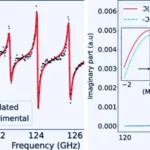Key Points
- DGIST, Incheon National University, and Kwangwoon University collaborated to enhance CZTSSe thin-film solar cells.
- Silver doping was introduced to reduce Sn loss, promote larger crystal growth, and minimize defects.
- Correct Ag placement significantly reduces electron-hole recombination and boosts solar cell efficiency.
- The breakthrough could lead to affordable, high-performance solar cells, advancing eco-friendly energy technology.
A collaborative research team from Daegu Gyeongbuk Institute of Science and Technology (DGIST), Incheon National University, and Kwangwoon University has developed a silver (Ag) doping technique to enhance the performance of kesterite (CZTSSe) thin-film solar cells. This brings these next-generation solar cells closer to commercial application. The research was published in Energy & Environmental Science.
Led by researchers including Kee-Jeong Yang, Dae-hwan Kim, and Jin-gyu Kang from DGIST, with collaboration from Prof. Kim Jun-ho’s team at Incheon National University, and Prof. Koo Sang-mo’s team at Kwangwoon University, the research focused on improving cell efficiency by addressing electron-hole recombination issues and enhancing crystal growth.
CZTSSe solar cells, made from copper (Cu), zinc (Zn), tin (Sn), sulfur (S), and selenium (Se), are emerging as a promising green alternative due to their affordability, eco-friendliness, and resource abundance. Unlike traditional solar cells that rely on rare metals, CZTSSe cells can be produced at large scales at low cost, making them highly competitive. However, efficiency limitations and significant current losses due to electron-hole recombination have hindered their commercialization.
The research team employed a novel method to incorporate silver into the CZTSSe precursor. This method combats performance issues by suppressing Sn loss and promoting efficient mixing at lower temperatures. By facilitating the growth of larger crystals with fewer defects, Ag doping enhances cell performance considerably.
Through a series of systematic experiments, the team discovered that the precise positioning of silver in the cell structure is crucial. If Ag is incorrectly placed, it can disrupt Zn and Cu alloy formation, leading to Zn clustering and increased electron-hole recombination, ultimately decreasing performance.
Another finding was that Ag doping produces a liquid phase that significantly accelerates crystal growth, enhancing the density and crystallinity of the CZTSSe absorber layer. This leads to a refined energy band structure, fewer defects, and smoother charge transport within the cell. This advancement in Ag doping technology is expected to reduce production costs while improving efficiency, positioning CZTSSe cells as a viable solution for high-performance, low-cost solar energy.
“Our study reveals how Ag doping can effectively suppress tin loss and reduce defects in solar cells, offering essential insights for optimizing silver-doped structures,” said senior researcher Yang Kee-jeong. “These findings will contribute to the future design and development of various solar cell technologies.”










